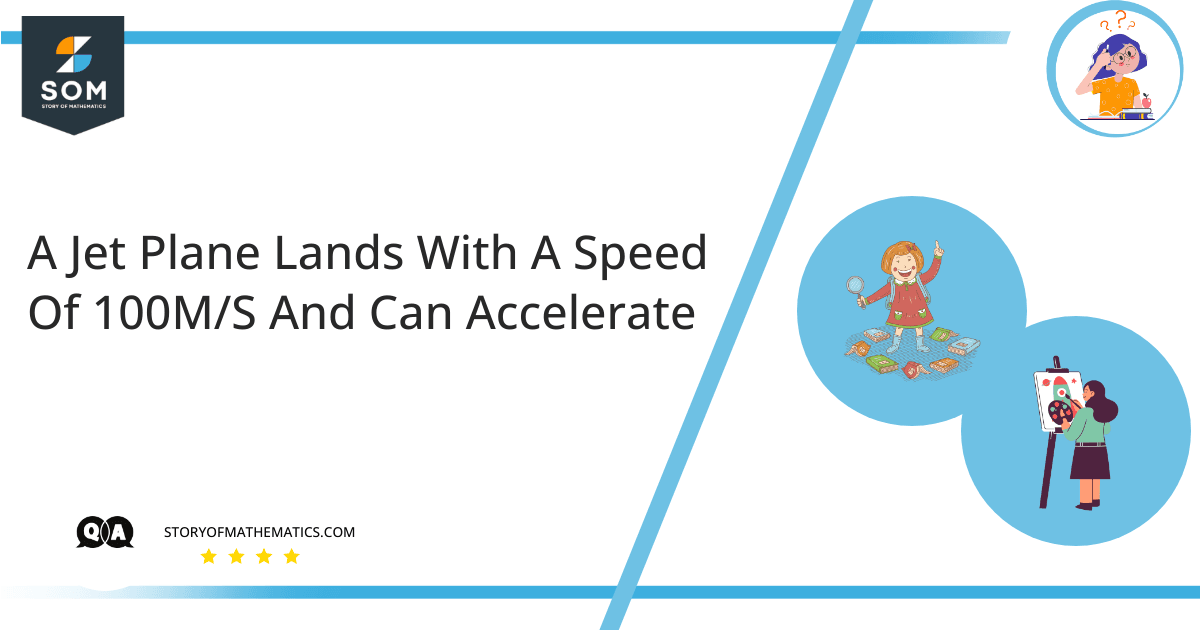
The question aims to find if a plane can land on a small tropical island if the runway is shorter than a kilometer.
The question depends on the concept of 3rd equation of motion. The 3rd equation of motion yields final velocity given a uniform acceleration and initial velocity over a given distance. The formula for 3rd equation of motion is given as:
\[ v_f^2 = v_i^2 + 2 a S \]
$v_i$ is the specific initial velocity of the object.
$v_f$ is the specific final velocity of the object.
$a$ is the uniform acceleration of the object.
$S$ is the distance traveled by the object.
Expert Answer
In this question, we are given some information about a jet plane that needs to land on a small tropical island. Our objective is to find out whether the plane will be to make a successful landing on the runway or not. The information that was given about the problem is as follows:
\[ Initial\ Velocity\ of\ the\ Plane\ v_i = 100\ m/s \]
\[ Uniform\ Acceleration\ of\ the\ Plane\ a = – 7\ m/s^2 \]
\[ Distance\ of\ the\ Runway\ S = 0.900\ km \]
As the plane needs to be fully stopped at the end of the runway, the final velocity of the plane is given as:
\[ Final\ Velocity\ of\ the\ Plane\ v_f = 0\ m/s \]
We need to determine whether the plane will be available to land on the runway or not. So we need to calculate the distance the plane would travel to fully stop given this information.
As we have both the initial and final velocities of the plane with its uniform acceleration, we can use the 3rd equation of motion to calculate the distance for the plane. One thing of note here is that we do not have the value of time for the jet plane, so we cannot use the 2nd equation of motion, which uses time. The 3rd equation to motion is given as:
\[ v_f^2 = v_i^2 + 2 a S \]
Substituting the values, we get:
\[ (0)^2 = (100)^2 + 2 \times – 7 \times S \]
Rearranging the values to calculate the distance.
\[ S = \dfrac{ (100)^2 }{ 2 \times 7 } \]
\[ S = \dfrac{ 10000 }{ 14 } \]
\[ S = 714.3\ m \]
\[ S = 0.714\ km \]
The runway is 0.900 km long, and the jet plane needs about 0.714 km to fully stop after landing. So the jet plane will be able to successfully land on the small tropical island.
Numerical Results
The distance needed for the jet plane to land is about 0.714 km, while the runway is 0.900 km long. The jet plane will be able to land on the small tropical island.
Example
An airplane has an initial velocity of 150 m/s with an acceleration of $5 m/s^2$. It needs to land a runway in the Himalayas mountains, but the runway is only 800 m long. Can this airplane land at the airport situated high in the mountains?
Given the information, we can use the 3rd equation of motion to calculate the distance the airplane will take to stop.
\[ v_f^2 = v_i^2 + 2 a S \]
Substituting the values, we get:
\[ S = \dfrac{ 150^2 }{ 2 \times 5 } \]
\[ S = \dfrac{ 22500 }{ 10 } \]
\[ S = 2250 m \]
The airplane needs a 2250 m long runway to stop, so it will not be able to land at the airport in the mountains.
